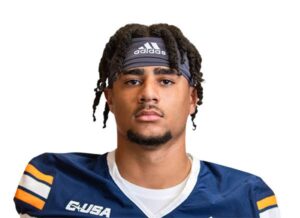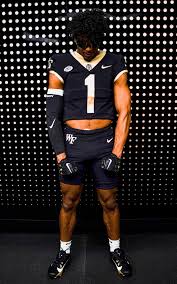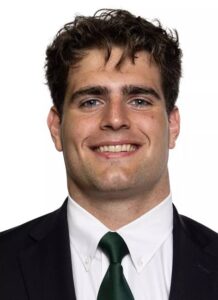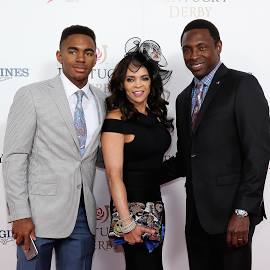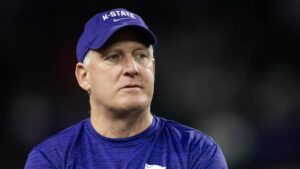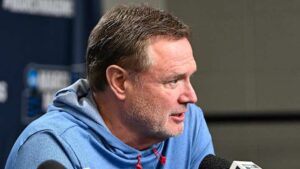Redemption and Reload: Inside Oklahoma’s Revamped Quarterback Room David Hale Ahead of 2025 Season due to…

The 2025 college football season approaches, all eyes are on Norman, Oklahoma, where the Sooners are quietly piecing together a new identity under center. Following a turbulent 2024 campaign defined by inconsistency and growing pains at quarterback, head coach Brent Venables and offensive coordinator Jeff Lebby have undertaken a complete overhaul of the Sooners’ quarterback room.
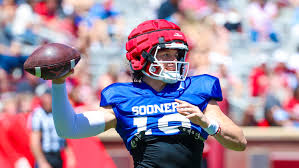
Gone are the days of relying on a single heavily hyped arm. Instead, Oklahoma has opted for a diversified approach—mixing blue-chip talent, proven transfer experience, and high-upside developmental prospects. This new strategy aims to create not just competition, but sustainability and flexibility for a program that has long prided itself on quarterback excellence.

Last season was a sobering one for Sooner Nation. After high preseason expectations, Oklahoma faltered down the stretch, finishing with a modest 8–5 record and a bowl loss to Arizona. Much of the blame landed on the shoulders of the quarterbacks, who rotated inconsistently throughout the season.
Redshirt sophomore Jackson Arnold, once seen as the next great Oklahoma signal-caller, struggled with decision-making and accuracy under pressure. Injuries and confidence issues hampered his development, and his backup, true freshman Caleb Hicks, wasn’t quite ready to take the reins. Combined, the Sooners’ quarterbacks threw 18 interceptions—second-most in the Big 12—and accounted for numerous drive-killing mistakes that cost Oklahoma key games.
A Bold Offseason Vision
The coaching staff knew change was necessary. Almost immediately after the season concluded, Venables and Lebby launched an aggressive plan to reshape the quarterback room. The Sooners hit the transfer portal hard while reaffirming commitments from top-tier high school recruits.
Their first major splash came with the signing of Blake Ransom, a transfer from Arizona State. Ransom, a redshirt junior with two years of eligibility remaining, brings poise, mobility, and SEC-level toughness. He threw for 2,987 yards and 24 touchdowns last year, despite playing behind one of the worst offensive lines in the Pac-12. Known for his calm demeanor and leadership, Ransom is expected to immediately compete for the starting job.
In addition to Ransom, Oklahoma also signed Rico Delmont, a four-star freshman from Katy, Texas. Standing at 6’4″, Delmont possesses a cannon arm and deceptive speed, making him an ideal fit for Oklahoma’s RPO-heavy scheme. Though raw, he impressed in spring ball with his quick learning curve and command of the huddle.
Perhaps the most intriguing piece, however, is Devin Matthews, a former five-star recruit who transferred from Florida after a coaching change. Once viewed as a future Heisman contender, Matthews fell out of favor in Gainesville but still retains elite tools. His dual-threat capability adds a dynamic dimension to Oklahoma’s playbook that was sorely missing last year.
A Culture of Competition
Instead of anointing a clear starter, Venables has opened up the quarterback battle heading into fall camp. This approach is already paying dividends.
“We want leaders, competitors, and decision-makers,” Venables said during spring practice. “We don’t need a star—we need a system that works. Every guy in that room knows the job is up for grabs, and that’s the way it should be.”
Quarterbacks coach Joe Jon Finley has emphasized fundamentals this spring, spending extra time on footwork, pocket presence, and pre-snap reads. Mistakes that were frequent last year—delayed throws, late reads, and poor field vision—are being addressed head-on.
In spring scrimmages, each quarterback had moments of brilliance. Ransom looked the most polished, consistently leading scoring drives. Matthews showcased his athleticism, breaking off a 58-yard touchdown run. Delmont flashed deep-ball potential and surprising composure in red-zone drills. Even Jackson Arnold, now a redshirt junior, has improved after a humbling 2024, showing tighter mechanics and better touch on intermediate routes.
More Than Just Arm Talent
What sets this year’s quarterback group apart isn’t just talent—it’s maturity and chemistry. The addition of Ransom and Matthews brought leadership and experience into a previously young room. Position meetings are more focused, and accountability has become a theme.
Wide receiver Jalil Farooq praised the change: “Last year, we had the talent, but we didn’t always have the focus or consistency. This spring, the quarterbacks are more vocal. They’re pushing us. They’re not just trying to make big plays—they’re making the right plays.”
Oklahoma’s offensive line, once a liability, is also expected to improve, with three returning starters and two key transfers. That stability should give quarterbacks more time to operate and reduce the turnover rate that plagued the team last year.
Looking Ahead to the 2025 Season
The Sooners open the 2025 season with a marquee matchup against Michigan State in Dallas, followed by a brutal September stretch that includes road trips to Tennessee and Kansas State. The quarterback battle will likely continue into Week 1, but the coaching staff hopes to settle on a clear leader early to build continuity.
While no official starter has been named, Ransom appears to have a slight edge due to his experience and consistency. However, Venables has not ruled out using a two-quarterback system if necessary.
“It’s not about politics or pressure—it’s about production,” said offensive coordinator Jeff Lebby. “If we’ve got two guys who can help us win, we’re not afraid to use them both.”
Restoring the Standard
For a program that has produced Heisman winners like Baker Mayfield, Kyler Murray, and Sam Bradford, quarterback play has always been the foundation of success. The recent downturn shook that identity, but Oklahoma is now positioned to reclaim its offensive swagger.
More importantly, the Sooners are building for the long term. With Matthews and Delmont representing the future and Ransom serving as the present stabilizer, Oklahoma has layered its quarterback depth chart in a way that should yield results well beyond 2025.
As the season nears, optimism is once again bubbling in Norman. Lessons have been learned. Mistakes have been addressed. And in the quarterback room—once a source of frustration—hope is alive.
Whether it’s redemption for Jackson Arnold, a breakout for Blake Ransom, or a new era ushered in by Rico Delmont or Devin Matthews, one thing is certain: Oklahoma’s quarterback room won’t be the weak link again.
In fact, it might just be the reason t
he Sooners return to the College Football Playoff conversation.
